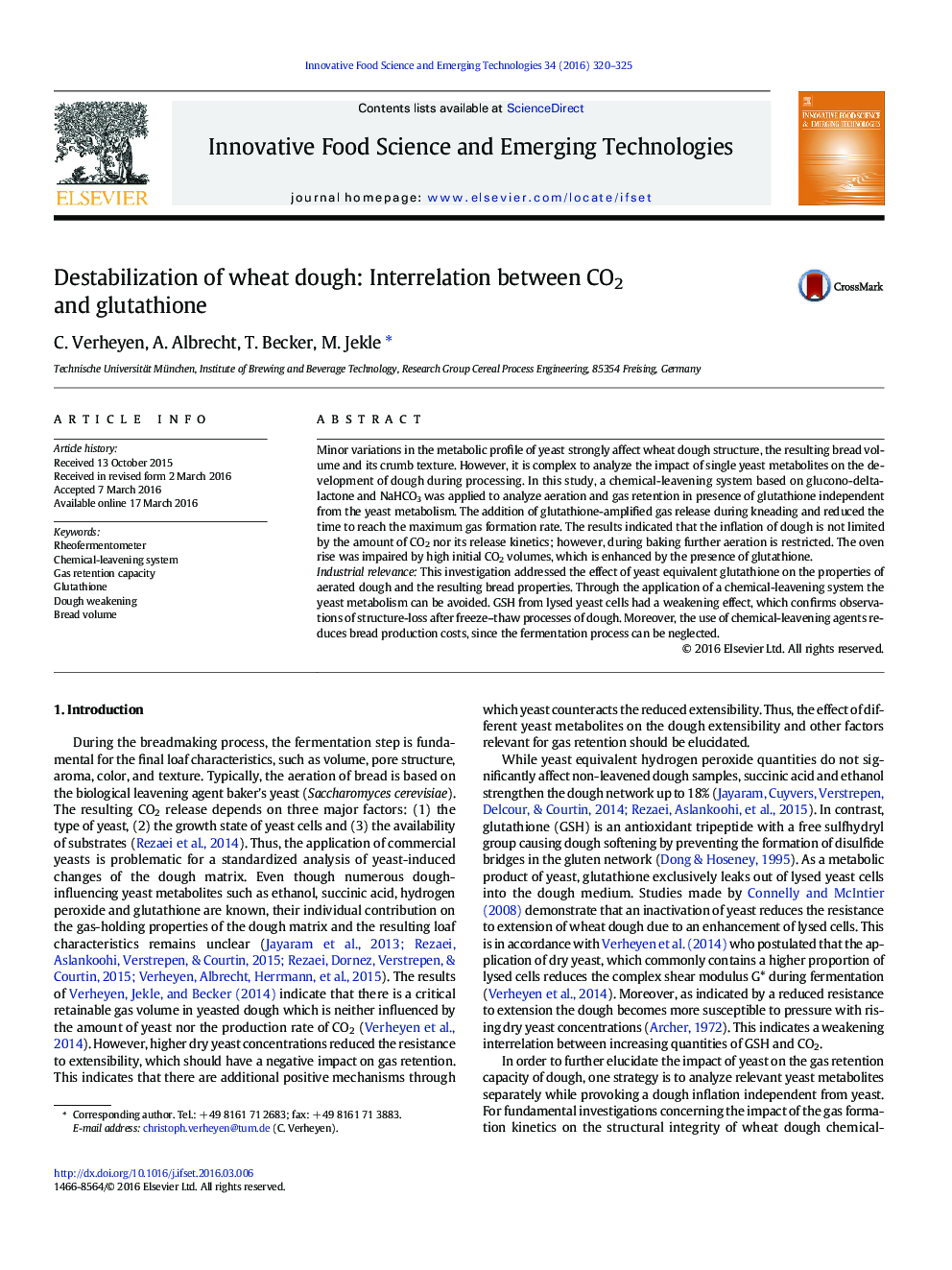| Article ID | Journal | Published Year | Pages | File Type |
|---|---|---|---|---|
| 2086383 | Innovative Food Science & Emerging Technologies | 2016 | 6 Pages |
•With chemical agents, material properties of dough enable an enhanced inflation•Gas retention capacity during resting is exclusively related to CO2 formation rate•Yeast equivalent glutathione (GSH) quantities improve the gas retention capacity•A loaf volume reducing interrelation between CO2 formation rate and GSH exists•Chemical-leavening agents significantly reduce bread production process
Minor variations in the metabolic profile of yeast strongly affect wheat dough structure, the resulting bread volume and its crumb texture. However, it is complex to analyze the impact of single yeast metabolites on the development of dough during processing. In this study, a chemical-leavening system based on glucono-delta-lactone and NaHCO3 was applied to analyze aeration and gas retention in presence of glutathione independent from the yeast metabolism. The addition of glutathione-amplified gas release during kneading and reduced the time to reach the maximum gas formation rate. The results indicated that the inflation of dough is not limited by the amount of CO2 nor its release kinetics; however, during baking further aeration is restricted. The oven rise was impaired by high initial CO2 volumes, which is enhanced by the presence of glutathione.Industrial relevanceThis investigation addressed the effect of yeast equivalent glutathione on the properties of aerated dough and the resulting bread properties. Through the application of a chemical-leavening system the yeast metabolism can be avoided. GSH from lysed yeast cells had a weakening effect, which confirms observations of structure-loss after freeze–thaw processes of dough. Moreover, the use of chemical-leavening agents reduces bread production costs, since the fermentation process can be neglected.
